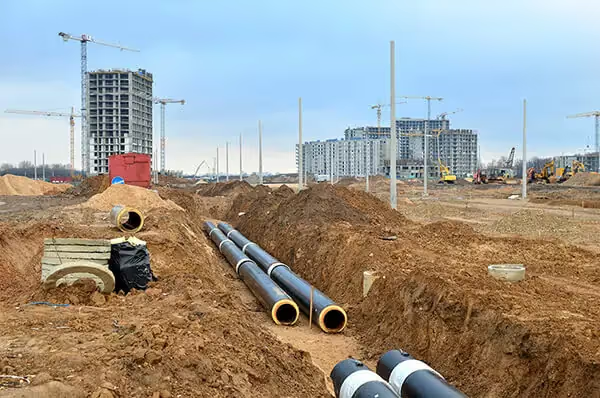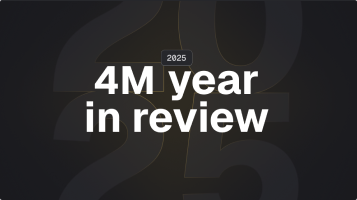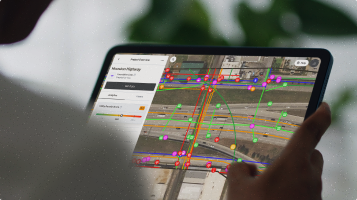Keys to a Successful Project Delivery: Risk Mitigation
Written by

Published on
April 3, 2022


Table of contents
Risk is an unavoidable element of any construction or infrastructure project. Whether it’s from health and safety issues on the project site, environmental hazards, financial complications or utility strikes—risk can knock any project off track.
When project managers, contractors, and project owners don’t take the right steps to properly mitigate risk, even simple projects can quickly become expensive quagmires. But when key stakeholders act together to mitigate and minimize risk early on, project owners and project managers can keep their projects safe, on time, and on budget.
In this post, we’ll touch on a few key sources of risk for any project.
Then we’ll discuss several best practices for mitigating utility risk and ensuring a successful project delivery method—and explore how utility mapping can be a valuable part of any utility risk mitigation strategy.
In a previous post, we talked about the key differences for utility stakeholders between Design Bid Build and Design Build project delivery methods. One of the key differences between the two methods is the way that risk is allocated between the different project stakeholders.
In Design Bid Build projects, project owners often hold much of the ultimate responsibility for different types of risk—especially utility risk—because they are coordinating between the designer and the contractor.
In Design Build projects, on the other hand, design-builders takes on a more significant share of the risk as they become involved earlier in the construction process.
No matter the project delivery method, there are some common sources of risk for any project:
Health and Safety risk:
The best-known and most dangerous type of risk on any construction or infrastructure project. At best, health and safety issues on a project site can cause significant and expensive delays— and at worst, they can lead to worker injuries and loss of life.
Environmental Risk:
Environmental risk can come from several sources and can be expensive if not managed correctly. It can come from work in sensitive environmental areas, delays in acquiring environmental permits, pollution from debris and construction materials, land degradation, and even from project site noise and vibrations.
Schedule Risk:
When project schedules are overly ambitious or don’t factor in issues caused by potential poor weather or coordination issues, costs can quickly rack up and delayed work can cause unexpected expenses.
Utility Risk:
Utility strikes caused during excavation and construction are incredibly common—and expensive.
According to the Common Ground Alliance, there are over 400,000 accidental utility strikes in the United States every year.
These strikes can have significant direct and indirect costs for all project stakeholders—including injured workers, transmission interruptions, project delays, and costly relocations.
All project stakeholders have big incentives to work together to minimize project risk.
Project managers, estimators, designers, engineers, and service providers have several tools at their disposal to minimize utility risk.
Best Practices for Mitigating Utility Risk:
Utility stakeholders have several options to help them mitigate utility risk and keep projects on track.
- Utility Conflict Matrices: Depending on the type of project delivery methods, the way that utility risk is allocated between different stakeholders can change in significant ways. By using a utility risk matrix, project owners, design-builders and contractors can understand the allocation of utility risk in each project from the outset, ensuring that utility risk is already built into the contract terms from the beginning.
- Call 811: Throughout the United States, project stakeholders have a legal obligation to make use of municipal Call 811 locating services. These services provide approximate utility locations based on as-built documents.
- SUE Services: These services can integrate a broad range of technological solutions, including different types of remote sensing, electric, potholing, and ground-penetrating radar technologies.
- Early Utility Coordination: There’s a broad industry consensus that the earlier all stakeholders are involved in the utility management process of a project, the better. A number of studies suggest that by bringing together utility owners, project managers, contractors, and designers early in the project delivery method, project owners can minimize utility conflicts before they become major issues.
How can Utility Mapping play into a utility risk strategy?
No matter the project delivery method, utility mapping can be an important and valuable part of any utility strategy. In the earliest phases of a design build or design bid build project, clear and comprehensive utility data can give project managers and estimators a good picture of the subsurface utility landscape relevant to their project. That can orient the entire project in the right direction—giving project owners and general contractors a head start in addressing utility conflict, estimators the ability to better price in utility risk, and designers the ability to design more accurately and quickly.
Utility mapping also works in tandem with other key utility risk mitigation tools throughout the lifecycle of a project. Estimators can see clearly where subsurface utilities might require dealing with private easements, and utility owners can begin to understand where relocations might be required. And SUE providers, for example, can use utility mapping as a snapshot of the subsurface utility landscape, allowing them to minimize time needed out in the field and to verify that they’ve efficiently located all utilities.
Of course, having a clear look at the subsurface also facilitates early utility coordination, by enabling project owners and designers to identify the relevant utility stakeholders and begin working with them early in the project lifecycle. A report sponsored by the Texas Department of Transportation found that having clear utility information early in the process can create big advantages for all stakeholders:
“State DOT’s agreed that general strategies to make optimal design decisions would involve access to accurate and comprehensive utility data, utility adjustment cost data, informed and trained designers, and timely and frequent communications with utility owners.”
Utility mapping can be an important piece of any utility strategy—helping all stakeholders minimize their exposure to utility risk.
Recent blog posts

Our Newsletter
Join 7k infrastructure professionals
Get monthly insights on ways to build smarter, faster and safer with Utility AI.

.avif)




